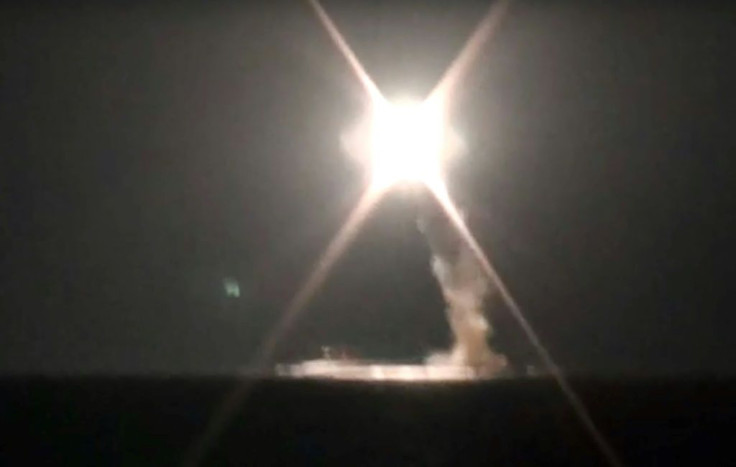Putin's 'Invincible' And 'Very Expensive' Hypersonic Missile Has Major Limitations, Expert Reveals

KEY POINTS
- An expert says the Zircon missile cannot both fly at high speed and hit a moving target
- The missile's high speed creates a plasma layer that blocks radar signals it needs to guide them to targets
- The Zircon missile would need to slow down to supersonic speed to hit moving objects
A Russian missile that Russia's President Vladimir Putin touted as "invincible" has major limitations, according to an expert.
In 2018, Putin pointedly described the Zircon hypersonic missile as an "invincible" weapon that is "invulnerable" to U.S. defenses. Russian officials also claimed the 3M22 Zircon can travel at Mach 9, or about 6,000 mph, making it very hard to shoot down using current anti-missile systems.
In contrast, Sidharth Kaushal, a naval warfare expert at the British think tank, Royal United Services Institute, said Putin's powerful missile has a major limitation in that it cannot both fly at a high speed and hit a moving target.
"The operational deployment of the Zircon is an important development, but one whose significance should not be exaggerated," Kaushal said. "Fielding the Zircon will do little to change Russia's immediate fortunes in its ongoing war. The vessels carrying the missile cannot be redeployed to the theatre of combat around Ukraine via the Bosporus and, moreover, even if they were, there are few targets within Ukraine's civilian infrastructure that would justify the use of limited numbers of likely very expensive missiles."
Kaushal explained that missiles traveling at hypersonic speeds — Mach 5 and above — ionize the air around them, creating plasma layers responsible for blocking radar signals. However, the missiles also need active radar seekers to guide them to their targets.
This means Russia's Zircon missiles would have to slow down to supersonic speed to use its radar if it is targeting moving objects such as ships. Supersonic missiles can be intercepted and brought down by shipboard defenses.
"Because the missile's plasma layer precludes the use of active radar and other onboard sensors to track a target vessel in the terminal phase, the missile likely has to slow down to well short of hypersonic speeds in order to track mobile targets," Kaushal added.
In addition to its speed limitation, the Zircon missile, when launched, needs to stay at an altitude of about 12 miles until it is relatively close to its target, making it more visible to radars.
However, Kaushal warned against underestimating the capabilities of Zircon hypersonic missiles, adding that, in some cases, targets would likely only detect the missile when it gets within 15 miles, giving destroyers about 15 seconds to react.
Putin last month boasted that they have deployed the frigate Admiral Gorshkov armed with advanced hypersonic missiles on a voyage through the Atlantic Ocean, to the Meditteranean Sea and finally into the Indian Ocean. It would be the missile's first deployment in a potential combat situation, Russian state media TASS reported.

© Copyright IBTimes 2024. All rights reserved.






















